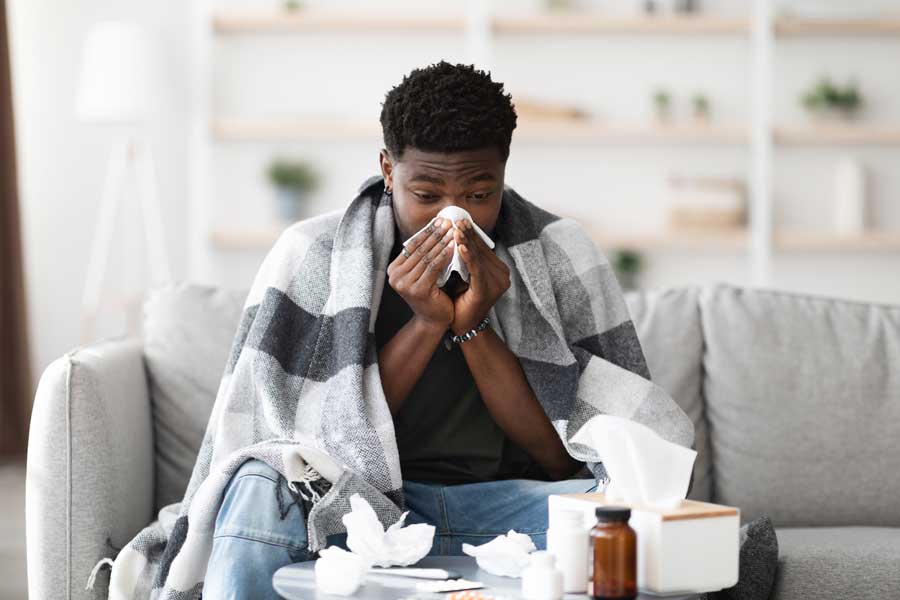While allergy season in northern California is worse in spring and summer months, allergy sufferers can begin experiencing symptoms as early as late January.
In addition to bushes and trees that begin producing these allergens so early in the year, you may also be dealing with poor indoor air quality.
Learn about and tackle those cool weather indoor air quality issues before allergy or cold symptoms set in.
Factors that Affect Air Quality
More Time Indoors
When the weather outside is cool, rainy or otherwise unpleasant, it’s no wonder why more time is spent indoors.
With the doors and windows shut, allergens brought in from coats, clothing and pets still get inside your home. When they do, they are circulated throughout your home by your HVAC system.
Breathing in the dust, pet dander and yes, even mold brought in from outside sources can give you cold or flu-like symptoms, or worse, trigger allergy symptoms.
Germs and Bacteria in the Air
In addition to allergens already present in the home, you can also bring in and expose your home to bacteria and viruses picked up from infected surfaces like shopping carts or door handles.
Touching surfaces in your home without consistent hand washing or using hand sanitizer gives bacteria and viruses the chance to become airborne, spread throughout your home and land on surfaces.
Lower Temperatures and Humidity Levels
The lower the temperature outside, the lower the humidity level in your home. If you get a slight “shock” as you touch metal and certain surfaces, you can tell how dry the air is.
Viruses spread faster in cold, dry conditions and if humidity levels in your home are low, the greater the odds of contagious cold and flu viruses surviving and thriving in your home.
Improved Air Quality Hacks
To minimize your risks of spreading viruses and allergens in your home, try these healthy air hacks this season.
Frequent Air Filter Changes
The best and easiest air quality prevention hack is to change your HVAC air filter more often.
A clean air filter not only captures and traps more dirt, dust and allergens from circulating throughout your home, it also helps your HVAC run more efficiently.
Air Cleaner/Purifier
Installed as part of your HVAC system, air purifiers work along with the air filter to further filter out allergens and contaminants in the indoor air.
A fan pulls air in, filters it and returns cleaner air into your living spaces.
In addition to filtering out dust, pollen, mold spores and other allergens, some air purifiers help eliminate odors and work to kill airborne bacteria and viruses in the air.
Humidifier
Running a humidifier to increase humidity in stale, dry indoor air can alleviate symptoms of allergies and respiratory issues.
It’s important to watch humidity levels to maintain healthy, not overly humid levels. It’s also important to keep the humidifier very clean to prevent contaminated air from circulating.
Conclusion
Good air quality goes a long way to help stay healthy and comfortable during cooler months and prepare for the upcoming allergy season.
In Santa Rosa and surrounding communities, call the experienced HVAC technicians at Dale HCS for top notch equipment, recommendations and preventative service and maintenance.

